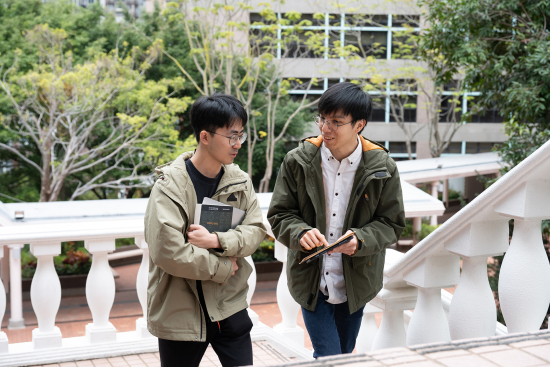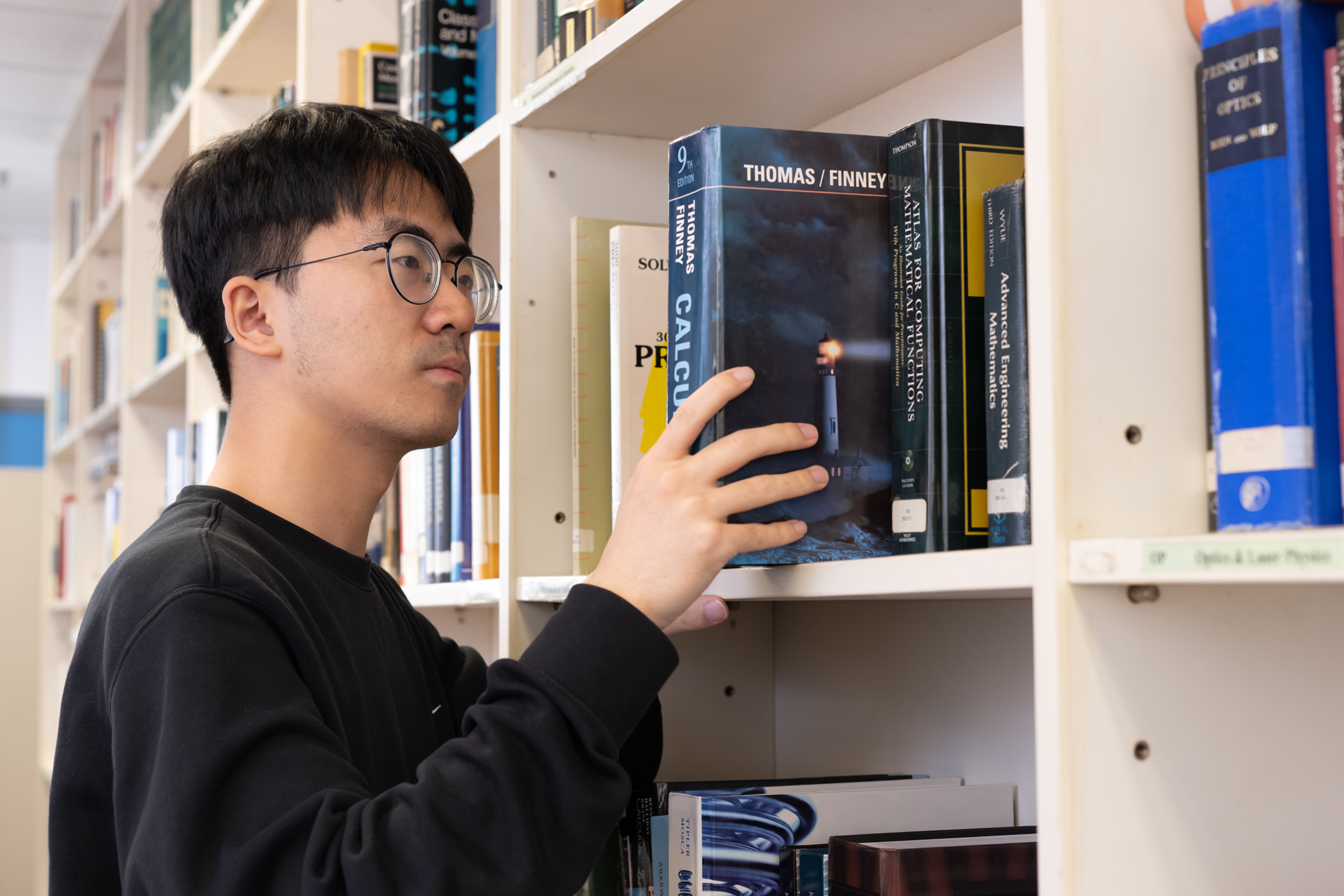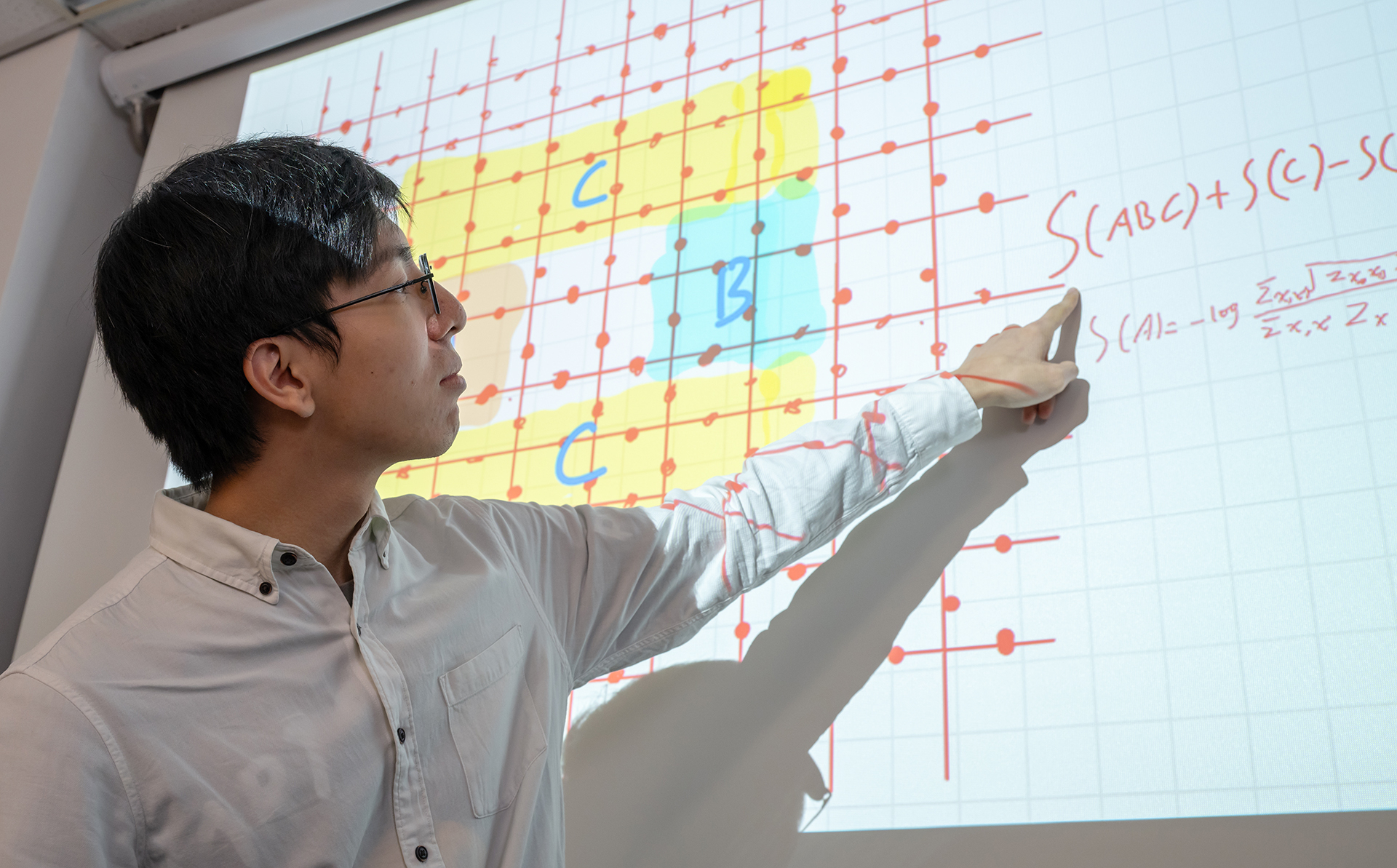Research HighlightsBACK
A new glimpse into the “spooky” world of quantum physics

Mr. Menghan Song (on the left) and Mr. Ting-Tung Wang (on the right) from the Department of Physics at HKU.
Researchers at the University of Hong Kong have developed a pioneering method to map quantum entanglement, a phenomenon where particles remain interconnected regardless of distance. This innovation, termed entanglement microscopy, provides a novel way to study the intricate behaviours of quantum systems at a microscopic scale. The study, led by Professor Zi Yang Meng from HKU’s Department of Physics, tackles one of the major challenges in quantum physics: understanding how entanglement manifests in complex systems. Quantum entanglement is a key feature of quantum mechanics and underpins technologies such as quantum computing and cryptography. However, its behaviour in many-particle systems has been difficult to analyse due to the immense complexity involved.
Using advanced simulations, the team applied their method to two quantum models, revealing how entanglement behaves under different conditions. For example, they observed that in two-dimensional systems, entanglement connections are short-range and can abruptly vanish—a phenomenon known as ‘sudden death.’
By contrast, fermionic systems, where particles must be in different states, exhibited more gradual declines in entanglement over distance. The findings also highlighted how dimensionality influences entanglement structures, offering a deeper understanding of quantum matter.
Remarkably, two students, Ting-Tung Wang and Menghan Song, at the time in their second year of their PhD course, were instrumental in coming up with these findings. Croucher News caught up with them to find out more. First, we asked Wang and Song about how this project began.
“When our collaborators from the University of Montreal came to us with their new paper containing a theoretical prediction on how quantum entanglement evolves in a system,” they told us, “we began to design this algorithm to compute it numerically.” The involvement of the team at the University of Montreal was a key factor in the success of this project, Wang and Song told us. “Their expertise in quantum information and analytical methods was pivotal.”

Song explained his motivation for working on this kind of project. “Entanglement defies classical intuition—it’s the glue of quantum matter. Unravelling its structure in systems like high-temperature superconductors or near black holes could revolutionise technology and our understanding of the universe.”
For the two students, “quantum physics captivates us because it reveals nature’s most profound mysteries—like how particles ‘communicate’ instantaneously through entanglement. And entanglement is believed to act as a smoking gun for novel quantum matters.”
They told us that the project “arose from the challenge of getting entanglement information in the subregion of quantum many-body systems.” And they are inspired by the strangeness of what they are researching: “Imagine two coins that always land on the opposite side from each other, even across galaxies. Entanglement is that "spooky link" between particles—it’s the reason quantum computers could solve problems impossible for classical ones.”

Wang added that the sheer difficulty of what was involved was a motivating factor, “Delicate entanglement measures were considered unattainable via quantum Monte Carlo (QMC). But the algorithm we proposed enabled us to compute them.” Named after the famous casino in Monaco, the QMC is a computational method used to study quantum systems and uses random sampling.
The two students explained that their role was to adapt QMC in order to sample reduced density matrices—which describe just a part of the system—at microscopic subregions. “This is crucial for finding entanglement,” they clarified.
Both Song and Wang were excited by the work they’d done. Song told us that “realising that entanglement microscopy could bridge numerical simulations and analytical results...felt like developing a microscope for quantum correlations!” And for Wang, realising that a relatively modest tweaking of the standard algorithm would allow them to make novel measurements was an “aha!” moment. “It is an important foundation of this work and opens new doors,” he said.
Looking ahead, they acknowledged that there is plenty of work still to be done. And Song told us that he was looking forward to extending entanglement microscopy to “other interesting quantum many-body systems such as quantum spin liquid and topological phases.”
Published in Nature Communications, with Wang and Song as the first authors and Professor Meng and Professor William Witczak-Krempa as corresponding authors, this research could advance quantum technologies by improving hardware design and simulations. The findings may also aid in developing next-generation materials for energy and electronics while enhancing our understanding of fundamental physics.
Since this paper was written, the two students have continued to engage in further investigations into different aspects of quantum entanglement. For example, they have recently obtained interesting results on using quantum entanglement to detect novel phase transitions (published in Science Advances) as well as how to characterise the quantum entanglement in a realistic setting that mimics the situation in a quantum computer (in press at PRX Quantum). Clearly, there’s a lot more to come from them.
The above news can be accessed at the following link:
https://croucher.org.hk/en/news/a-new-glimpse-into-the-spooky-world-of-quantum-physics




